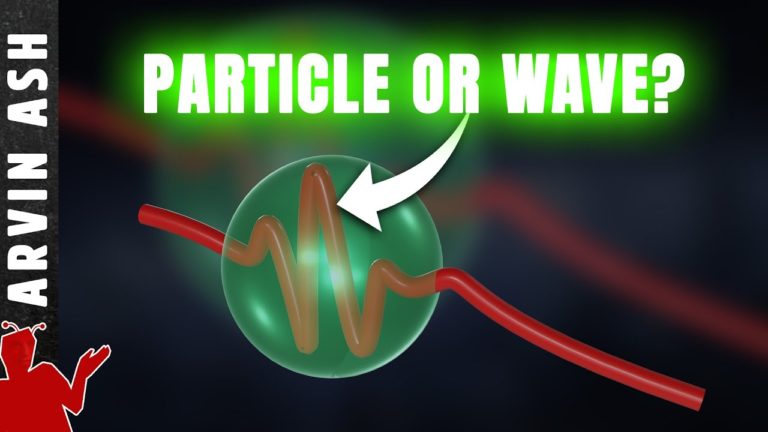Are Photons & Electrons Particles or Waves? Make up your mind !
By the end of 1905, we had two big new equations in physics. Max Planck’s, Energy equals Planck’s constant times the frequency, and Einstein’s Energy equals the mass times the speed of light squared. A young physicist, Louis Debroglie decided to combined them: MC^2 = hf, Since c and h are constants, if you ignore them, it simplifies to M = f – mass is essentially equal to frequency.
But how can mass equal frequency because these are two completely different things. Mass is associated with particles. Frequency is associated with a wave.
Waves like water waves and sound waves can disappear, but the particles doing the waving would still be there. What is doing the waving in quantum objects? Quantum mechanics says that that the particle is not only a particle but is also a wave. They are not separate.
This duality can be demonstrated with the double slit experiment. The original experiment done by Thomas Young in 1801 showed that light is a wave. But modern versions of this experiment show that individual photons of light behave like waves, but behave like particles if measured. But why did it change when we measured it? What caused this change to occur. This is the measurement problem in physics. There is no definitive answer.
What does the wave function in quantum mechanics mean? For Newtonian mechanics, the primary equation is F = MA – Force equals mass times acceleration. Using this if we know the initial position, velocity, and all the forces acting on a particle, I can tell you its exact position at a later time.
The primary equation for quantum mechanics is the Schrodinger equation. In this equation, instead of solving for the particle’s position, we need to solve it for something called the wave function.
Now what is psi – the wavefunction? It is a mathematical expression that represents the state of a quantum system. It is related to the probability of finding the particle in a particular location. Specifically, the square of the norm of the wave function gives you the probability density of the particle. Solving this for an object, I can’t tell you where the particle will be. I can only tell you the probability of where you might find it if you measured it.
So quantum objects are kind of smeared across space. They are not like little balls that we can point to and say – it’s there, and it’s moving this fast. All matter behaves like this including things like sand grains, basketballs, and even your body.
But if that is the case, then why don’t basketballs behave the way electrons do – like waves smeared across space? The answer is because the wave behavior of objects that we can see with our eyes, like sand grains or even dust particles is so small that we do not notice it.
To understand why, we have to invoke de Broglie. He believed particles and waves have the same traits, and he derived an equation that describes this. He came up with the de Broglie wavelength, lambda is equal to h, Planck’s constant over mass times velocity, which is also momentum.
Using this relationship, we can find the wavelength of any particle. Solving for an electron in a hydrogen atom, its wavelength is 3.3 x 10^-10 meters. The wavelength of a grain of sand moving 10 m/s would have a wavelength of 10^-25 meters. And for larger things like a basketball, the wavelength would be even smaller – 10^-34 meters. This is not measurable.
A wavelength is one quantum of action. The smaller the wavelength, the less quantum-like the object is. If the wavelength becomes extremely small, any action of that object appears to be continuous. This is why we don’t notice any quantum behavior in macro scale objects. The smaller the wavelength, the less the wavy-ness the object has.
This is why particles with large wavelengths compared to their size like electrons, photons, and other quantum objects exhibit wavelike and thus quantum-like behavior.
Do not forget to share your opinion with us to provide you with the best posts !




0 Comments